Introduction to On-Page SEO and Its Importance

On-Page SEO refers to a set of actions performed within your website to improve its ranking in search engine results.
These actions include optimizing keywords, content structure, meta tags, and internal linking.
The main goal of On-Page SEO is to send clear signals to search engines like Google so they can correctly understand the topic and value of your pages.
These optimizations help search engines crawl and index your content better, and ultimately, display it to relevant users.
Without attention to On-Page SEO, even the best content might get lost among competitors.
Optimizing a website internally is an ongoing process that requires constant attention and regular updates.
Why is On-Page SEO so crucial? In today’s digital world, where competition for visibility is intense, every detail can make a difference.
These optimizations not only help search engines but also improve User Experience (UX).
A well-structured site with easy navigation and relevant content keeps users engaged longer and reduces bounce rates.
This, in turn, is considered an important factor in Google’s ranking algorithms.
On the other hand, internal optimization allows you to have more control over how your pages appear in search results and enables you to send a more precise message to your target audience.
Therefore, investing time and effort in On-Page SEO means investing in the long-term success of your website.
This section provides a general and comprehensive explanation of the importance and definition of On-Page SEO, laying the groundwork for more specialized topics in subsequent chapters.
Tired of your e-commerce website not generating as much revenue as it could? Rasaweb, specializing in professional e-commerce website design, solves this problem forever!
✅ Increase sales rate and revenue
✅ High loading speed and unparalleled user experience
⚡ Get free e-commerce website design consultation
Research and Selection of Effective Keywords
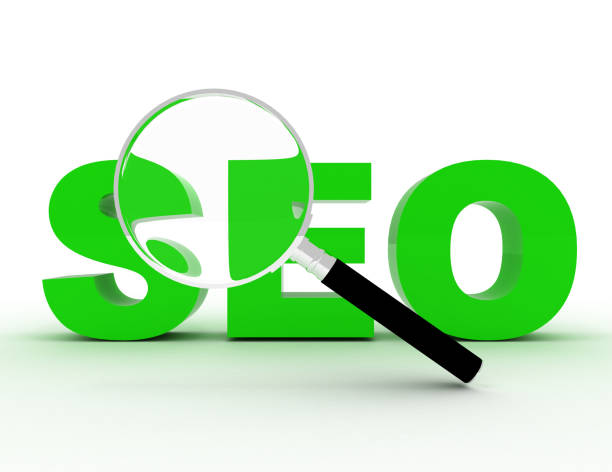
Keyword research is the first and most crucial step in any On-Page SEO strategy.
Choosing the right keywords helps you create content that users are truly looking for.
This process involves identifying phrases that your target audience types into search engines.
This stage is not limited to just finding high-volume keywords; special attention must also be paid to user search intent.
Are users looking for information? Do they intend to buy? Or are they looking for a specific website? The answers to these questions determine the type of content you should produce.
For this, you can use tools like Google Keyword Planner, SEMrush, Ahrefs, and even Google’s suggestions in the search bar.
After identifying keywords, you should categorize them based on search volume, competition, and relevance to your content.
Focusing on “Long-tail Keywords,” which consist of three or more words, can be very beneficial.
Although these keywords have lower search volumes, they indicate a more specific search intent and typically have higher conversion rates.
Proper use of keywords in the page title, meta description, headings (H1-H6), and content text helps search engines better understand your page’s topic.
Remember that Keyword Density is important, but it should not come at the expense of natural-sounding text.
Keyword Stuffing will not only fail to help your ranking but may also lead to Google penalties.
This educational section is highly practical for a deeper and hands-on understanding of keywords in On-Page SEO.
Content Structuring and HTML Tag Optimization
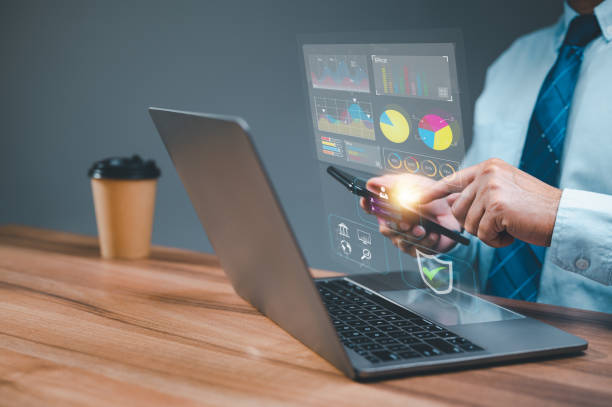
Proper content structuring is one of the main pillars of On-Page SEO.
A logical and hierarchical structure not only helps content readability for users but also assists search engine robots in better understanding the page’s topic.
Using appropriate HTML tags like H1 for the main title, H2 for main headings, and H3 to H6 for subheadings plays a vital role in this area.
The H1 tag should contain the main keyword of the page and be used only once per page.
This tag is like the title of a book that states the main topic of the page.
In addition to headings, optimizing the Meta Description tag and the Title Tag is of high importance.
The Title Tag is the text displayed at the top of the browser and is the most important factor in attracting user clicks from search results.
This tag should include the main keyword, be engaging and persuasive, and have an appropriate length (usually between 50 to 60 characters).
The Meta Description is also a short and attractive summary of the page’s content that is displayed below the title in search results.
Although the meta description does not directly affect ranking, it can significantly increase your Click-Through Rate (CTR).
Specialized On-Page SEO also means paying attention to technical details.
Using Alt tags for images (explaining image content for search engines and visually impaired individuals), as well as optimizing URLs to be short and descriptive, are other important considerations.
A good URL should be readable and include the page’s main keyword.
| HTML Tag | Usage in On-Page SEO | Key Points |
|---|---|---|
<title> |
Defines the page title in the browser and search results | Most important CTR factor, includes main keyword, 50-60 characters long |
<meta name="description"> |
Page summary for display in search results | Indirectly affects ranking, but increases CTR, should be engaging and descriptive |
<h1> |
Main content heading | Only once per page, includes main keyword |
<h2> to <h6> |
Subheadings and content segmentation | Give logical structure to content, increase readability |
<img alt=""> |
Explains image content for search engines | Makes images accessible in image search results, should be descriptive and concise |
Producing High-Quality and User-Friendly Content
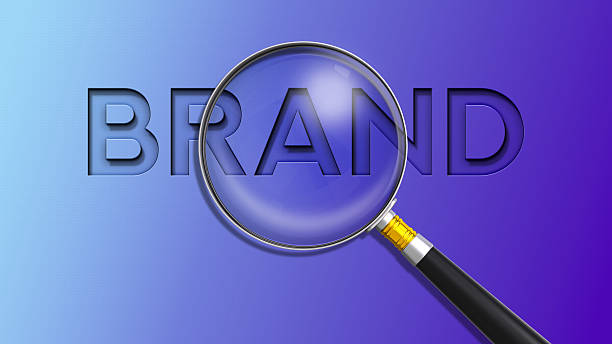
Producing high-quality content is the beating heart of any successful On-Page SEO strategy.
Content written for users, not just for search engines, is your most valuable asset.
High-quality content means content that is comprehensive, accurate, unique, and relevant to user needs.
This content should answer user questions, solve their problems, and provide information beyond what is found elsewhere.
Google and other search engines are increasingly valuing user engagement signals (such as time spent on page, bounce rate, and click-through rate), all of which are influenced by content quality.
To produce user-friendly content in the field of On-Page SEO, attention should be paid to aspects such as fluent writing without spelling errors, using short and readable paragraphs, employing lists and tables to improve structure, and including relevant images and videos.
Furthermore, your content should always be up-to-date.
Outdated information can harm user experience and send negative signals to search engines.
Regularly updating old articles with new information and current statistics is one of the effective strategies for maintaining rankings and attracting traffic.
This is a practical guide for producing excellent content.
Additionally, content can be of various types:
- Explanatory Content: Fully explains basic concepts.
- Educational Content: Provides step-by-step guides on how to do something.
- Specialized Content: Delves into more technical and advanced details of a topic.
- News Content: Covers the latest industry news and developments.
- Analytical Content: Analyzes data and trends.
- Question-provoking Content: Answers common user questions and engages their minds.
- Guidance Content: Offers practical tips and tricks to users.
- Entertaining Content: Although less common in On-Page SEO, it can be effective in attracting audiences and building branding.
Variety in content types can enrich your website and help attract a wider range of audiences, strengthening your On-Page SEO.
Are you bothered by losing customers due to your e-commerce site’s outdated appearance or slow speed? The expert team at Rasaweb solves these problems by designing professional e-commerce websites!
✅ Increase customer trust and brand credibility
✅ Stunning speed and excellent user experience
Get a free consultation with Rasaweb right now ⚡
Optimizing Site Speed and User Experience
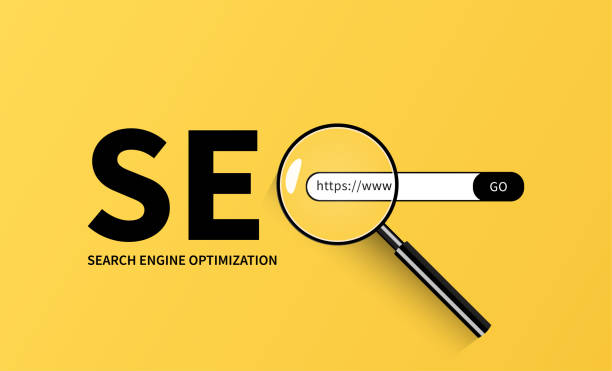
Site loading speed is one of the most important factors for On-Page SEO and user experience.
In today’s world, where users expect pages to load quickly, every millisecond of delay can mean losing a visitor and a drop in search results ranking.
Google has explicitly stated that site loading speed is a ranking factor.
Tools like Google PageSpeed Insights, GTmetrix, and Pingdom Tools can help you analyze site speed and identify issues.
Solutions for improving speed include optimizing image size, compressing CSS and JavaScript files, using caching, and choosing a high-speed host.
In addition to speed, User Experience (UX) refers to the ease and enjoyment of using a website for users.
A site with good UX has simple navigation, responsive design (displayable on various devices), and accessible content.
Core Web Vitals, which include Largest Contentful Paint (LCP), First Input Delay (FID), and Cumulative Layout Shift (CLS), are Google’s metrics for measuring user experience quality and directly impact On-Page SEO ranking.
Improving these metrics not only benefits users but also signals to search engines that your site is valuable and trustworthy.
This section provides guidance for improving the technical aspects of internal site optimization.
Importance of Internal Linking and Site Structure Improvement
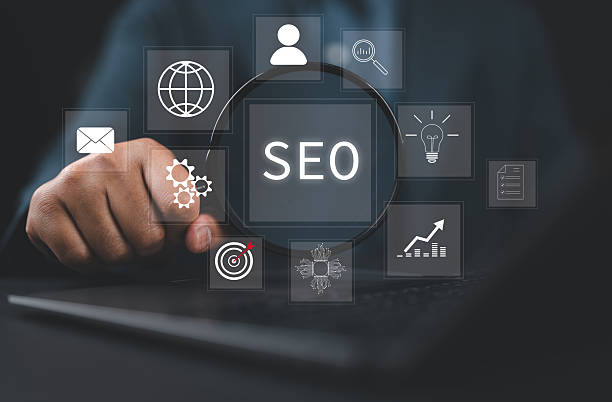
Internal linking is one of the most powerful On-Page SEO tools that is often overlooked.
Internal links are links that point from one page on your website to another page on the same website.
These links serve three main purposes: 1.
They help users easily navigate your site, 2.
They help search engines understand your site’s structure and discover new pages, and 3.
They distribute Link Equity throughout your site.
Pages that receive more internal links generally appear more important to search engines.
For a successful internal linking strategy, several points should be considered:
- Using relevant anchor texts: The Anchor Text should be relevant to the content of the destination page and include the relevant keyword.
- Linking to important and relevant pages: Link from pages with high authority to more important and newer pages to pass on their authority.
- Siloing structure: Organizing content into topical clusters connected by internal links helps search engines understand your expertise in a specific area.
A logical and hierarchical site structure, like a pyramid with the homepage at the top, categories in the middle, and more detailed pages at the bottom, helps Google bots easily access and index all your pages.
XML sitemaps and robots.txt files also play an important role in this regard, as they show bots how to crawl your site and can help with On-Page SEO.
This section discusses the technical and strategic aspects of internal linking in detail and provides a comprehensive analysis for optimizing site structure.
The Role of Content Updates and Outdated Content in On-Page SEO
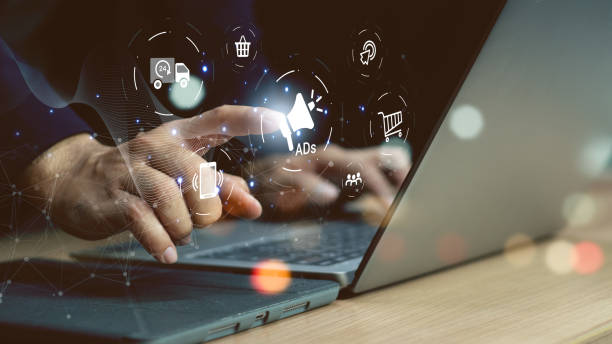
Did you know that old and outdated content can subtly harm your site’s ranking? Stagnant and un-updated content not only becomes informationally expired but also sends negative signals to search engines that your site is inactive or its information is unreliable.
Regular content updates are an effective strategy in On-Page SEO that can significantly increase your site’s ranking and traffic.
This involves reviewing, supplementing, and revising old articles with new information, updated statistics, and adding new sections for greater comprehensiveness.
This analytical approach helps you keep your content dynamic and relevant.
When you update your content, Google positively evaluates these changes and usually gives your page a “fresh breath” that can help increase its ranking.
Also, adding new and updated information can lead to attracting external links (Backlinks) and improving user experience, as users are looking for accurate and reliable information.
To identify outdated content, you can use tools like Google Analytics to check pages with high bounce rates or low dwell times.
You can also examine keywords that previously had good rankings but have now dropped.
This is a practical guide that helps you keep your content always fresh and relevant and fully leverage the potential of On-Page SEO.
This continuous process helps you perform internal site optimization in the best possible way.
Common Challenges and Solutions in On-Page SEO

On-Page SEO, despite its immense importance, can come with challenges that require understanding and appropriate solutions.
Have you ever encountered pages that, despite excellent content, are not visible in search results? This is a thought-provoking piece that addresses common challenges in On-Page SEO.
One such challenge is Keyword Cannibalization, where multiple pages on your site compete for a similar keyword.
This can confuse search engines and reduce the ranking power of your pages.
The solution to this problem is to review and merge similar pages, use 301 redirects, and optimize keywords uniquely for each page.
Another challenge is Duplicate Content, which can arise from different versions of a page (e.g., with or without WWW, HTTP, or HTTPS) or copying content from other websites.
Search engines have issues with duplicate content and may penalize or ignore a page.
To resolve this, it is essential to use Canonical tags to specify the main version of the page, implement 301 redirects, and ensure that all site versions redirect to a single primary domain.
Furthermore, Broken Links that point to non-existent pages not only disrupt the user experience but also harm the site’s SEO.
To fix this, you should regularly scan the site with tools like Screaming Frog to identify and fix broken links.
Finally, neglecting mobile-friendliness can be a major challenge in On-Page SEO, as most searches today are conducted via mobile devices.
Google’s guide explicitly emphasizes the importance of Responsive Design.
This section of the article helps you become familiar with the most common on-page SEO issues and learn specialized solutions to overcome them.
| Challenge | Description | Solution |
|---|---|---|
| Keyword Cannibalization | Multiple pages competing for a single keyword | Merge pages, 301 redirects, optimize keywords for each page |
| Duplicate Content | Presence of similar versions of content | Canonical tag, 301 redirects, remove copied content |
| Broken Links | Internal or external links to non-existent pages | Regular site scanning, fix or remove links |
| Lack of Site Responsiveness | Improper display of the site on mobile devices | Responsive Design |
Are you dissatisfied with the low conversion rate of visitors to customers on your e-commerce site?
Solve this problem forever with professional e-commerce website design by Rasaweb!
✅ Increase visitor-to-customer conversion rate
✅ Create an excellent user experience and build customer trust
⚡ Get a free consultation
Google Algorithm Updates and Their Impact on On-Page SEO

Search engines, especially Google, continuously update their algorithms to provide the best and most relevant results to users.
These updates can have significant impacts on On-Page SEO strategies.
For example, Core Updates, which occur several times a year, can cause major fluctuations in website rankings.
Understanding these changes is vital for anyone involved in internal site optimization.
This news and analytical section introduces you to the latest trends and their impact on On-Page SEO.
One of the most important recent updates that directly impacts On-Page SEO is the focus on Page Experience and Core Web Vitals.
Google has included these metrics as part of its ranking factors.
This means that loading speed, page interactivity, and visual stability have gained more importance.
Sites with poor user experience, even with excellent content, may struggle in rankings.
For success in On-Page SEO, continuous monitoring of Core Web Vitals reports in Google Search Console and resolving related issues is essential.
Furthermore, Google increasingly emphasizes Content Quality and Credibility (E-A-T: Expertise, Authoritativeness, Trustworthiness).
This means that your content should be written by experts, be authoritative, and trustworthy.
This trend impacts On-Page SEO by emphasizing author transparency, accurate and up-to-date information, and the absence of misleading content.
Following official Google news and announcements and studying analytical articles from SEO specialists helps you keep your internal optimization strategies aligned with the latest algorithm changes and avoid potential penalties.
On-Page SEO for Local SEO and Local Businesses

On-Page SEO is not limited to global rankings and plays a vital role in Local SEO.
For local businesses, visibility in local search results is of high importance.
When a user searches for a phrase like “restaurant near me” or “TV repairman in [city],” Google looks for results that are geographically closer and more relevant to the user.
Optimizing On-Page SEO for local SEO requires a slightly different approach.
One of the most important steps is ensuring accurate and consistent NAP (Name, Address, Phone Number) information across your website and in your Google My Business profile.
This information should be clearly displayed in the site footer, contact us page, and any other relevant pages.
Additionally, using local keywords in page titles, meta descriptions, and main content is crucial.
For example, if you are a cafe in Isfahan, you should use phrases like “Isfahan cafe” or “best coffee in Isfahan” in your content.
Creating separate pages for each location (if your business has multiple branches) and optimizing these pages with unique local information (such as opening hours, directions, and local customer reviews) can significantly help your local On-Page SEO.
Additionally, encouraging customers to leave reviews on Google My Business and other local platforms helps increase your credibility and ranking in local search results.
This is a practical and engaging guide that shows you how to leverage the potential of on-page SEO to grow your local business.
Frequently Asked Questions
| Question | Answer |
|---|---|
| What is a Meta Title and why is it important in On-Page SEO? | The meta title is the most important element of On-Page SEO, displayed at the top of the browser tab and in search results. It helps search engines and users understand the main topic of the page and should include the main keyword. |
| What role does the Meta Description play in On-Page SEO? | The meta description is a short summary of the page’s content displayed below the title in search results. Although it does not directly affect ranking, its attractiveness can increase the Click-Through Rate (CTR). |
| How should keywords be used in page content? | Keywords should be used naturally and relevantly in strategic locations such as the title, headings, first paragraph, and body text. Avoid excessive keyword stuffing. |
| What is the importance of quality and comprehensive content in On-Page SEO? | High-quality, unique, informative, and comprehensive content that addresses user needs is of great importance. Search engines give higher rankings to content that provides real value. |
| What is the purpose of heading tags (H1-H6) in On-Page SEO structure? | Heading tags (H1, H2, H3, etc.) are used to structure content and indicate the importance of different sections. H1 is the main title of the page, and each page should only have one H1. Other tags are used for subheadings. |
| How to optimize images to improve On-Page SEO? | To optimize images, use descriptive Alt Text that includes relevant keywords, reduce the image file size without losing quality, and use meaningful and relevant file names. |
| What are the characteristics of an SEO-friendly URL? | A friendly URL should be short, readable, descriptive, include main keywords, and be free of extra characters. The URL structure should be hierarchical and logical to be understandable for both users and search engines. |
| How does Internal Linking help On-Page SEO? | Internal linking, by connecting related pages, helps users and search engine crawlers better understand the site structure, transfers page authority, and increases user dwell time on the site. |
| What is the impact of page loading speed on On-Page SEO? | High loading speed is vital for both user experience and SEO ranking. Slower pages may be ignored by search engines and lead to an increased Bounce Rate. |
| Why is Mobile-Friendliness very important in On-Page SEO? | Given the increasing number of searches via mobile devices, having a responsive and mobile-friendly website is essential for user experience and ranking in search results (Google’s mobile-first indexing). |
And other services of Rasaweb advertising agency in the field of advertising
Smart SEO: An effective tool for user engagement through attractive UI design.
Smart Conversion Rate Optimization: A fast and efficient solution for digital branding with a focus on SEO-driven content strategy.
Smart UI/UX: A fast and efficient solution for online growth with a focus on SEO-driven content strategy.
Smart Custom Software: A combination of creativity and technology to improve SEO ranking through an SEO-driven content strategy.
Smart UI/UX: A fast and efficient solution for customer behavior analysis with a focus on Google Ads management.
And over a hundred other services in the field of internet advertising, advertising consultation, and organizational solutions
Internet Advertising | Advertising Strategy | Advertorial
Sources
Comprehensive On-Page SEO Guide
On-Page SEO Checklist
On-Page SEO Tips for 2023
Website SEO Optimization
? For a powerful online presence and visibility for your business, Rasaweb Afarin offers comprehensive digital marketing services, including professional WordPress website design, alongside you.
📍 Tehran, Mirdamad Street, next to Bank Markazi, Southern Kazeroon Alley, Ramin Alley, No. 6



